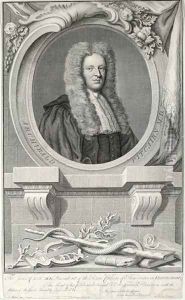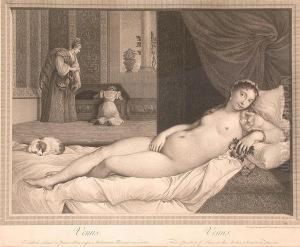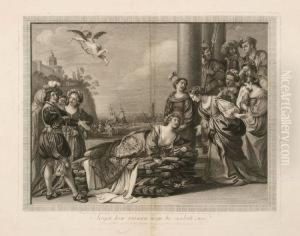Robert Strange Paintings
Robert Strange was a prominent Scottish engraver born in 1721 in Pomona, one of the Orkney Islands, Scotland. He began his career apprenticing under the notable painter Richard Cooper in Edinburgh, where his talent for art and engraving quickly became apparent. Strange's life, however, was not just confined to the development of his art; it was also marked by his active involvement in the Jacobite uprising of 1745, supporting Charles Edward Stuart, also known as Bonnie Prince Charlie. This political involvement forced him to flee to France after the failure of the uprising, where he continued to hone his craft and was influenced by the works of the great European masters.
During his time in France, Strange was particularly influenced by the works of Italian engraver Marcantonio Raimondi and the French artist François Boucher. His style evolved to incorporate a blend of intricate detail and subtle gradations of tone, which became characteristic of his later works. After his return to Britain in 1750, Strange established himself in London and embarked on a successful career, becoming one of the most respected engravers of his time. His works included portraits, historical subjects, and reproductions of paintings by renowned artists such as Titian, Raphael, and Van Dyck. Strange's engravings were celebrated for their elegance and accuracy, and he played a significant role in promoting the appreciation of classical art in Britain.
Despite his allegiance to the Jacobite cause, Strange was eventually accepted by the British establishment and was even offered a knighthood by King George III, which he declined. His marriage to Isabella Lumisden, a fellow Jacobite, also played a significant role in his life, providing him with a stable personal life and a partnership that supported his artistic endeavors.
Robert Strange died in 1792, leaving behind a legacy as one of the leading figures in 18th-century British engraving. His contributions to the art of engraving and his efforts to elevate the status of the engraver to that of the artist have been recognized by art historians as instrumental in the development of fine art engraving in Britain. His works continue to be studied and admired for their technical skill and artistic beauty.













